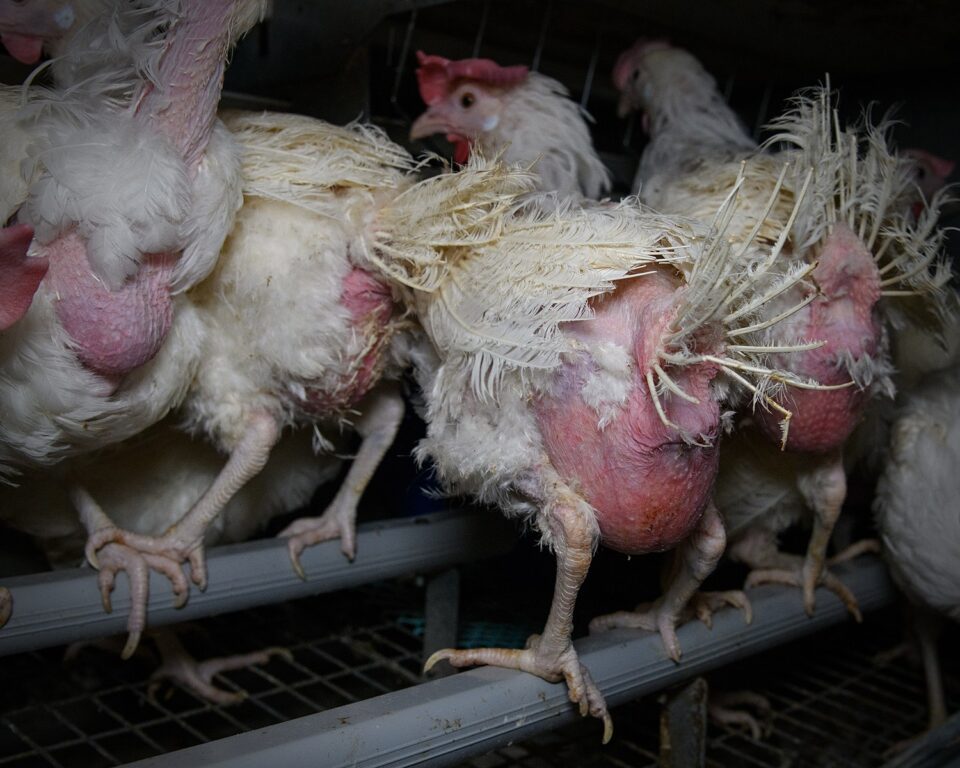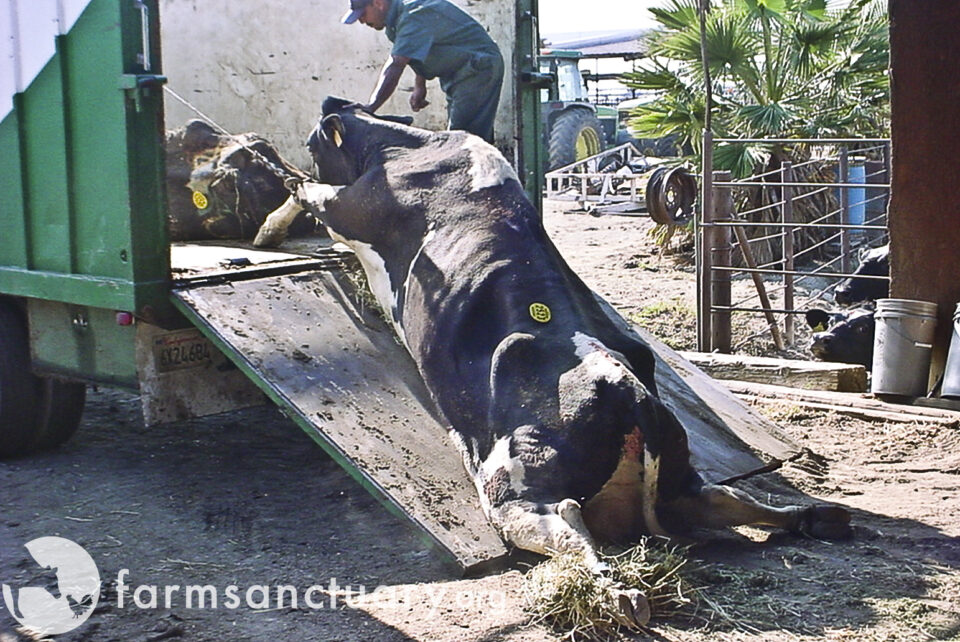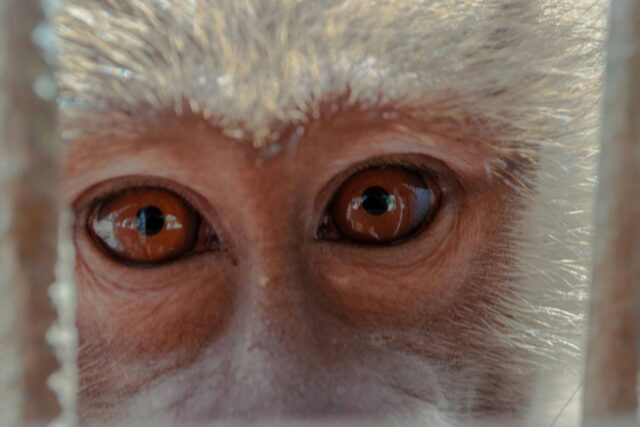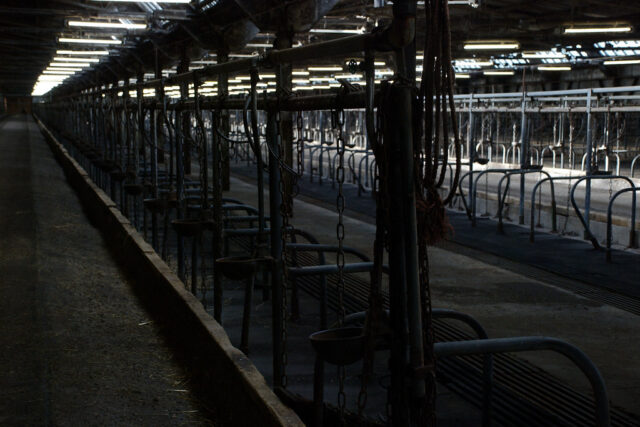The Factory Farm Industrial Complex
The harms behind the United States’ “food” production system
Nyala Carbado
October 21, 2024
What comes to mind when you imagine animals on farms? Perhaps you think of grassy fields and sprawling land. Or your mind’s eyes might take to you to a large red barn inside of which roosters roam freely. You may even see cows (and then think: Got Milk?). Chances are, whatever image comes to mind, it is at the very least benign and likely to be positive.
But those positive images and the stories they tell do not capture the reality of modern factory farms. Yet, those are precisely the images that persists in our collective imagination. The question is: Why? There are at least three plausible answers.
First, people may genuinely be unaware of the negative externalities of factory farming. Second, to the extent that people are aware of those negative impacts, they may not see themselves as the root cause of the problem. “What does it matter whether or not I eat meat?” people might tell themselves. Third, grappling seriously with factory farming would requires us to fundamentally change our relationship to food, animals, and the environment, which people may be reluctant push for. Corporations play a role in shaping each of the preceding realities. Before I explain how, it may be useful to describe the realities of factory farming. That description will focus our attention on the images of factory farming the public rarely sees.
One place to begin is the National Resources and Defense Council statement on the harms of factory farm lagoons. It focuses on a dimension of factory farming that for many people is entirely abstract—the dangerous gases that populate the air from decomposing manure. These gases include ammonia, hydrogen sulfide, and methane. Gases of the preceding kind have been linked to serious health concerns—such as seizures, comas, and even death—for people who live on factory farms and those who live nearby.
Factory framing intersects with other environmental and health-related problem. To begin, the waste produced through factory farms seeps into water sources. The creation of “lagoons” on factory farms is largely to blame for this contamination and its ecological and health effects. Lagoons are large manure storage systems found on or near factory farms. The waste and contaminants from lagoons enter into the ecosystem of nearby communities in a few ways.
First, farmers intentionally and routinely spray manure onto their fields. Individuals living near factory farms become collateral damage when wind redirects the manure onto their homes and property—sometimes quite literally “hitting” them in the process. The second way in which these contaminants reach communities is via runoffs from the lagoons. This “runoff” gets into the water supply, making the water undrinkable or unusable. Third, natural disasters or poor infrastructure cause the lagoons to overflow and burst. When this occurs, it produces significant environmental and health consequences because that overflow then floods nearby land and water systems. In particular, studies have shown that when “manure from the lagoons [] leach[es] into groundwater,” it can cause “nitrate contamination that prohibits residents from drinking the water” and the toxins in the air as a result of these lagoons are also linked to some of the “highest rates of emergency room visits for childhood asthma.”
“You can smell the blood and feces in the air…You can almost feel it.”
Of course, were one to ask the average person whether they think water contamination and dangerous gases are hazardous to both our health and the environment, they would say yes. The problem is that people don’t link these health, safety, and environmental concerns to factor farming. None of this is to say that there is an uncontroversial link between factory farming and the health problems I have outlined. Some studies are inconclusive on that matter. But there is certainly growing empirical evidence pointing to these higher levels of asthma, allergies, and cancer in communities near factory farms.
Quite apart from the foregoing health and environmental impacts of factory farming is the smell—the vile and pungent odor—of animals suffering, neglected, and living in overly crowded spaces. One animal rights activist, Christopher Eubanks—founder of APEX Advocacy—describes that odor, which he experienced while attending the animal vigils organized by the Animal Save Movement, this way: “You can smell the blood and feces in the air…You can almost feel it.” This sense of smell which one “can almost feel” is all the more salient on factory farms where there are more animals and more animal waste.
As you might imagine, all of the preceding harms exact an emotional, psychological toll on people as well. Imagine having to worry about whether a matter over which one may have little control—where one lives—exposes your family members, including your children, to serious health hazards and possibly even death? Imagine waking up day after day knowing that this day is potentially life-altering; this day is one where my child will develop cancer cells; this day is one where my son’s asthma will kick in; this day is one where my mother’s lungs will begin to fail her. Imagine knowing that when one of your family members becomes sick, their health precarity derived from the place you call home. For far too many people, those imaginings are not thought experiments. They are par for the course—the realities of living next to and being impacted by the harms of factory farming.
“These factory farms are typically in low income, Black and Brown, and marginalized communities. They aren’t near country clubs.”
Importantly the harms of factory farming are not shared equally. As with other social problems, people of color and low-income individuals are more likely than others to live in communities that are exposed to the harms that are incidental to factory farms. This demographic reality is precisely why many scholars and activists, including Eubanks have framed the harms of factory framing as a form of environmental racism. Eubanks describes the strategic placement of these farms to put this into sharp relief: “These factory farms are typically in low income, Black and Brown, and marginalized communities. They aren’t near country clubs.”
At this point, it’s helpful to think back to the thought experiment with which I began. Note the stark difference between the images that comes to mind when one thinks about factory farming and realities of factory farming (of which I have only discussed a few). The question becomes: What accounts for the disjuncture between the image of factory farming, one the one hand, and the realities? Corporate power provides an explanation.
Big Agriculture corporations and the associations that represent and support them rarely, if at all, engage in, let alone address the problems associated with factory farms I have discussed. Some corporations deny these harms altogether. For example, the North Carolina Pork Council explicitly contests the findings of studies that foreground a nexus between factory farming and environmental and health risks and maintains that that claims of environmental racism are “patently false.” Their report denied any disparate impact and even denied many of the studies’ claims regarding the harms caused by the farms generally.
Other corporations justify not only the way factory farms function, but also their negative impacts, employing cost-benefit analyses to do so. The nature of that cost-benefit analysis is such that when there is tension between the economic bottom line for these companies and the welfare of the people most affected by the externalities of factory farms, corporations routinely prioritize profit over people.
Moreover, when corporations perform their cost-benefit analysis, they do not fully internalize (in fact they minimize) the costs of factory farming and exaggerate their benefits. On the exaggeration side is the claim that factory farming plays a significant role mitigating food precarity. There is no meaningful evidence to support this claim. Andrew Stawasz, Legal Fellow at The Institute for Policy Integrity at New York University School of Law, argues that if we really did took seriously cost-benefit analysis, that could require a complete change to our current system.
The nature of that cost-benefit analysis is such that when there is tension between the economic bottom line for these companies and the welfare of the people most affected by the externalities of factory farms, corporations routinely prioritize profit over people.
The irony here is that factory farms take up a significant amount of land in the United States, land that could be used to produce crops and grains that would feed many more people than factory farmed animals could. It bears noting as well that food precarity is not simply or even most significantly a problem of food shortage. As Dinesh Wadiwel, a social political theorist, professor, and current Harvard Animal Law & Policy Fellow has stated, it is a problem of food distribution and the various global forces that ensures the maldistribution of food. The larger point is that the assertion that factory farming can help combat world or domestic hunger is not grounded in facts. It is a way for factory farms to “green wash” and “welfare wash” their industry in ways that obscure the degree to which factory farming privileges profits, not people.
Wadiwel has also done work linking the profit over people dynamic that characterizes factory farming to “intensification”—the process by which factory farms significantly expand their operations to maximize their profits. This expansion includes an increase in livestock production, an increase in the density of the facilities, and an increase in the numbers of workers moving in and out of farms. This intensification exacerbates the health and environmental problems previously discussed—including by producing larger quantities of waste, and larger varieties of pathogens that then spreads across farms and into local communities.









